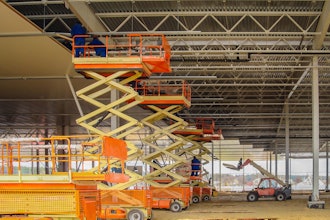Not too long ago, an article penned by members of A.T. Kearney’s Strategic Operations Practice outlined some of the major reasons why re-shoring, for all its business viability and value to the American economy, faces real problems with aging machinery and a workforce in need of new, well-trained people. Naturally, these two concerns stem from a variety of flaws in the educational and training systems currently in place throughout the U.S., and from a lack of foresight from manufacturers, who were not prepared for such a wide skills gap.
And perhaps more importantly, these concerns have become very real elements of the re-shoring equation, ones that manufacturers would be remiss to ignore while making the business case for bringing production back to the States from an off-shored location. Patrick Van den Bossche, the Americas Lead Partner at A.T. Kearney, says the difference between acknowledging these systemic flaws and working ahead to fix them, or ignoring them, could mean the difference between a successful and a failed change in doing business.
The aging element
When it comes to the current American manufacturing workforce, there are two truths most commonly accepted: that the people are getting older, and that the younger generations aren’t able or aren’t ready to pick up the slack. When it comes to the former, Van den Bossche says there’s no debating the real data — the median age of manufacturing workers has increased from 40.5 to 44.7 between 2000 and 2012. That’s a dramatic pick-up in such a short period of time, and reflects well the workforce reality.
Back in 2012, the Society of Manufacturing Engineers issued a bold report that stated there are 600,000 unfilled American jobs in the field of high-tech manufacturing. Amid a deep economic slump, it was a discouraging blow to the entire industry. It meant that not only had a cultural shift pushed young Americans away from manufacturing, but also that the frameworks for teaching these kinds of skill — community colleges, technical schools and apprenticeship programs — have fallen by the wayside, for one reason or another.
Van den Bossche says the lack of training is a significant part of this issue. “We’ve all gone through a rough time, and that’s one of the areas where you typically start to look at when cutting costs. Probably, companies haven’t done as good of a job as they used to, in terms of training their people.”
But he is quick to say that companies can’t be held solely accountable for the lack of skilled workers out in the job marketplace, nor can the schools or the teachers who help run them. He says, “Think about it — if you have a kid in school, with everything that happened in the last few years, with manufacturing moving overseas as fast as it did, would you feel comfortable to tell your kid to develop a career in manufacturing? I don’t think so.”
The truth is that manufacturing simply isn’t nearly as lucrative or attractive as it used to be. Van den Bossche claims that even if we started today in seriously rebuilding a manufacturing education curriculum, it would take at least a decade, if not longer, for returns to start showing. It’s not just that the students aren’t there — the teachers have left, too, either to retirement or to more lucrative industries.
The reason A.T. Kearney has worked to illustrate this situation, Van den Bossche suggests, is to prove that manufacturers need to incorporate these kinds of major cultural missteps in their business cases for re-shoring. The situation is more complex than many would like to believe, and re-shoring under a bad presumption would lead a company into a terrible future. With that in mind, Van den Bossche argues there are real solutions to the main problems of the re-shoring equation, at least when it comes to the labor force.
To continue reading this article, click here to visit our partner site, Manufacturing.net.






















